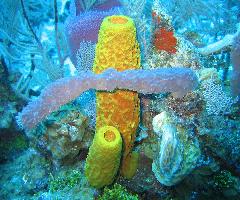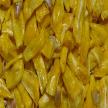It is important to remember that typhoons have a distinct “eye”, which is an area of calm. So during a typhoon, beware of a sudden calm and bright weather. The eye of the storm might be passing by your locality. Do not attempt to go out of your shelter. Within a couple of hours, the eye of the storm will go past your locality and you will again experience dangerously high speeding winds blowing in the opposite direction as what passed your area before the calm. Try to explain to the other members of your family why the winds blow
in one direction before the “eye” of the storm passes one’s locality and then blows in the opposite direction after the “eye” of the storm passes.Below is a more comprehensive list of precautionary measures we can do before, during, and after a typhoon. They may be additional measures that may be added to these lists.
Before a Typhoon:
- Help your family check and fix your house for any damage (especially the roofs and windows), so it can withstand the strong winds.
- Remind your family members to stock up an adequate food supply such as rice, canned goods, and foods that would last even without refrigeration.
- Stock up an adequate supply of drinking water, and water for cleaning or other purposes.
- Prepare flashlights, batteries for flashlights and radio, candles and kerosene lamps, or other lighting devices.
- Prepare a first-aid kit.
- Always monitor news about the typhoon, whether on television or radio. If the power is cut, keep a radio on and tuned in to news.
- Help check and clean your community drainage system and canals to prevent flood.
- Check your electric posts to prevent accidents. If you notice some impending danger due to weak electric posts that might fall, report this to the electric company so they can reinforce it right away.
- Remind family members to cut all branches of trees around your house that could possibly fall on your house.
- Help check all electrical warnings.
- Teach younger members of your family what to do during a typhoon.
- Pack a bag with clothes, batteries, flashlight, water, canned goods and other necessities, in case you have to evacuate.
During a Typhoon:
- Stay calm and be alert.
- Stay indoors. Postpone any plans of travels or errands.
- Monitor the weather reports. Check what is happening around you.
- When local authorities advise you to evacuate, do so. Move family pets and valuable to a safe place; turn off gas valves, electricity and water, when safe to do so.
- If you happen to be outdoors when a typhoon comes, (a) stay away from electric posts and wires; (b) never stand under a lone tree in an open field to avoid being hit by lightning; (c) never fix your TV antenna during a thunderstorm; (d) stay away from boats and from bodies of water; and (e) enter the nearest safe shelter.
- Avoid staying or going to low-lying and coastal areas that are prone to floods or storm surge.
- Be ready to evacuate if necessary. Leave your house as soon as you realize you are not safe.
- Boil drinking water or have some bottled water ready.
- If you happen to be in a car or any land vehicle when the typhoon comes, you are usually safe, but not when there is a flood.
- If you roofs have very little vents where winds pass through, or sometimes, when the winds of a typhoon are very strong, you may need to open a few windows in the opposite side of your house to let the wind pass through.
- Monitor flood reports and predictions.
- Have a flood plan which everyone in the family will follow when necessary. Be prepared to act on your food plan. Prepare a flood kit of essential items, just like your essentials for typhoons.
After a Typhoon:
- Have a knowledgeable person inspect electrical wiring before using electrical appliances. It is usually advisable not to use appliances immediately after a typhoon especially if your house got flooded.
- Check for any damage, including water pipes, and help make necessary repairs as soon as possible.
- Boil water before drinking it to avoid getting sick.
- Wear slippers, shoes or other footwear, for protection from any sharp or pointed objects that might have fallen.
- Avoid electrical wires that have fallen.
- Stay away from flood waters. They carry water-borne diseases. Many people who have survived a storm but braved flood waters actually have been hospitalized, not just for injuries or diarrhea, but also to the deadly leptospirosis. Leptospirosis is also known as Weil’s syndrome, and is caused by bacterial infection when dirty water contaminated with animal urine (commonly rats) comes in contact with a person’s unhealed wounds or scratches, newly pedicure nails, a person’s eyes, or with mucous membranes (like in skin, nostrils, mouth, lips, eyelids, ears, genital area and anus).
- Clean and clear everything damaged by the typhoon.
- Stay in a safe place with a means of escape.







